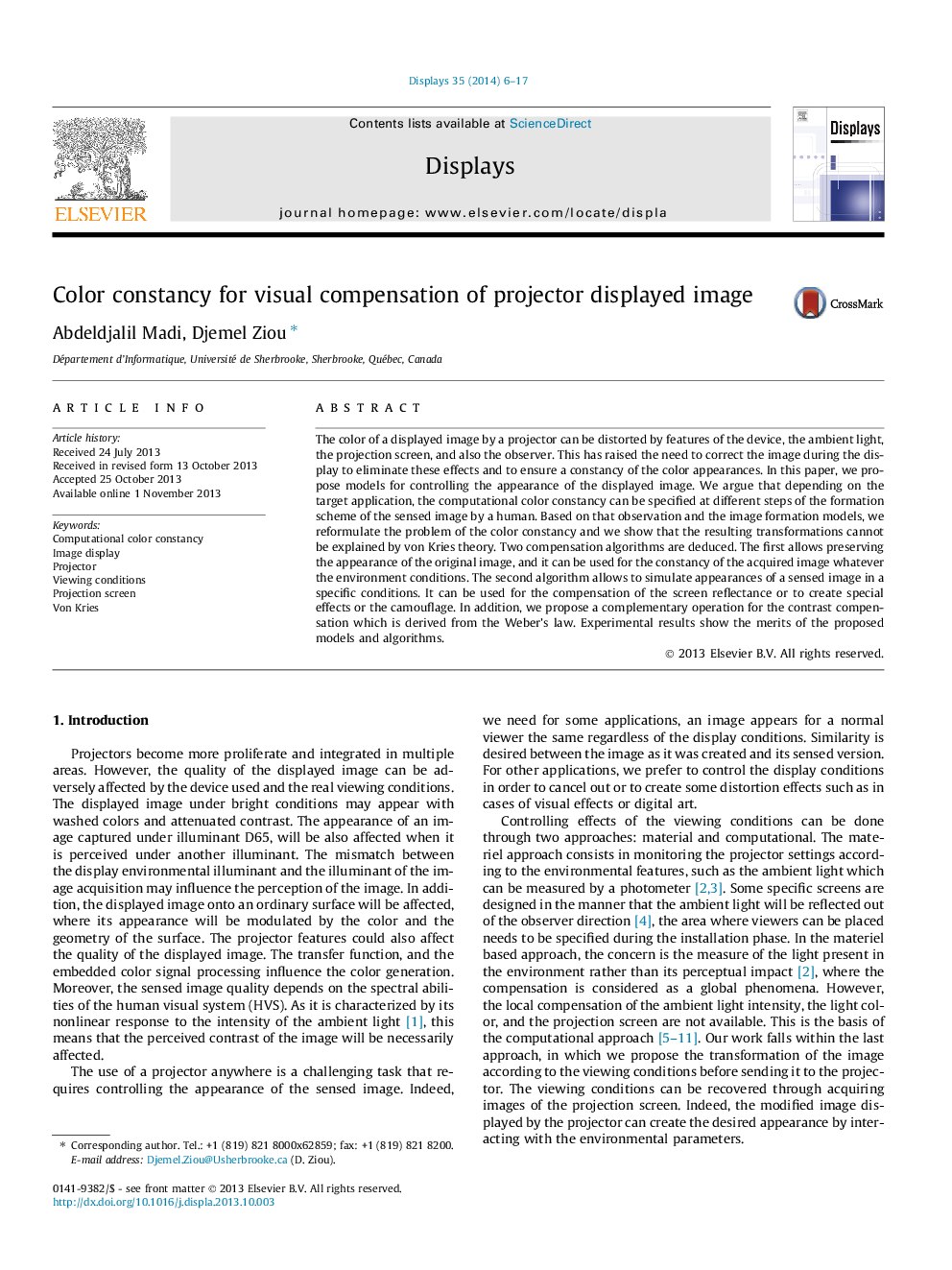| Article ID | Journal | Published Year | Pages | File Type |
|---|---|---|---|---|
| 538678 | Displays | 2014 | 12 Pages |
•We model the sensed image by human eye.•We explore the color constancy to reduce the screen effects on the projected image.•We argue that the proposed model goes further than the von Kries theory.
The color of a displayed image by a projector can be distorted by features of the device, the ambient light, the projection screen, and also the observer. This has raised the need to correct the image during the display to eliminate these effects and to ensure a constancy of the color appearances. In this paper, we propose models for controlling the appearance of the displayed image. We argue that depending on the target application, the computational color constancy can be specified at different steps of the formation scheme of the sensed image by a human. Based on that observation and the image formation models, we reformulate the problem of the color constancy and we show that the resulting transformations cannot be explained by von Kries theory. Two compensation algorithms are deduced. The first allows preserving the appearance of the original image, and it can be used for the constancy of the acquired image whatever the environment conditions. The second algorithm allows to simulate appearances of a sensed image in a specific conditions. It can be used for the compensation of the screen reflectance or to create special effects or the camouflage. In addition, we propose a complementary operation for the contrast compensation which is derived from the Weber’s law. Experimental results show the merits of the proposed models and algorithms.
